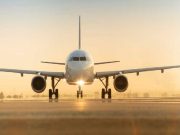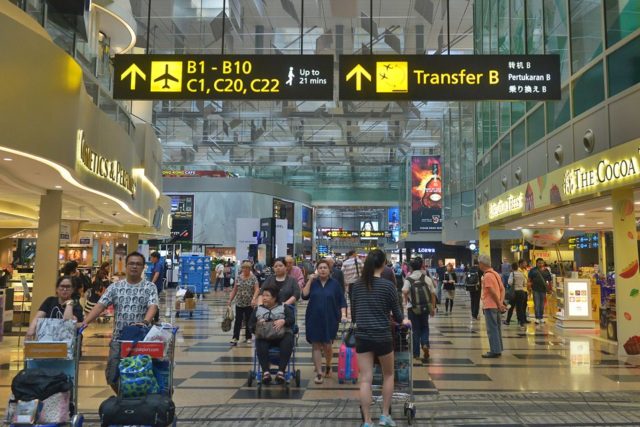Singapore, 22 Jan 2018 – Passengers flying out of Changi may soon have to pay between $10 and $15 extra, The Sunday Times understands, as part of a new tax being mooted to help pay for a major airport expansion, involving the building of Terminal 5.
Transit passengers could be charged about half the amount.
The tax, which could be imposed from later this year, is expected to be on top of the $34 departure charge ($6 for transit passengers), comprising a passenger service fee, a security tax and a levy collected by the Civil Aviation Authority of Singapore (CAAS).
The new tax, first reported by The Sunday Times last month, is to help pay for major works in Changi East to help cement Singapore’s air hub status, from the building of mega passenger terminal T5, set to open around 2030, to a third runway. It also includes ground improvement works at the over 1,000ha site and the building of massive drains and tunnels, some of which will move bags and people between T5 and the current airport.
Passengers will not be alone in bearing higher charges. Fees for airlines, including parking and landing fees, are expected to increase by about 30 per cent, said sources.
The total bill for Changi East is unclear, but it is expected to dwarf the billions spent so far – on T4, commercial development Jewel, which opens next year, and the multiple upgrades of the other three terminals in the last two decades.
But even with the new tax on passengers and higher fees from airlines, the Transport Ministry has said the Government will still bear “a large proportion” of total costs for the Changi East project.
Separately, airport operator Changi Airport Group will commit a sizeable portion of its annual profits to the development – not an insignificant amount given its profit after tax was around $660 million in the last financial year.
Asked to comment on the new charges, a ministry spokesman said it has been consulting industry stakeholders together with the CAAS. “Details have not yet been firmed up and we are still considering various options.”
T5 is expected to eventually handle up to 70 million passengers a year – more than T1, T2 and T3 combined – when completed. However, the third runway being built in the same project will be operational before that, in the early 2020s.
Business consultant Brendan Choo, 53, who travels a few times a year, mainly for work, said that while he understood the need for the expansion, he is hesitant at having to pay a tax now for a development that will be completed a decade later. “Why make me pay for something I may or (may) not use in future,” he said.
Other airports have introduced user charges to support growth plans. In 2016, Hong Kong International Airport, which is building a third runway due to be completed in 2024, started collecting between HK$70 and HK$180 (S$12 and S$30) a traveller. Also in 2016, airports in Dubai, United Arab Emirates and Doha in Qatar introduced a departure tax for travellers – the equivalent of about $13 – to help fund ongoing expansion projects.
The International Air Transport Association – the global voice of airlines – has said repeatedly it does not support pre-funding, where airlines have to pay for services and facilities they do not currently utilise.
Mr Michael Valkevich, Asia-Pacific vice-president for global sales and programme management at Carlson Wagonlit Travel, a global business travel management firm, said increasing charges for passengers could raise concern about Changi’s competitiveness as a hub.
“That said, a report from the World Economic Forum ranks Singapore among the most competitive countries globally when it comes to ticket taxes and airport charges, and I think most passengers do recognise the advantages of travelling through Changi Airport.”
ST




































